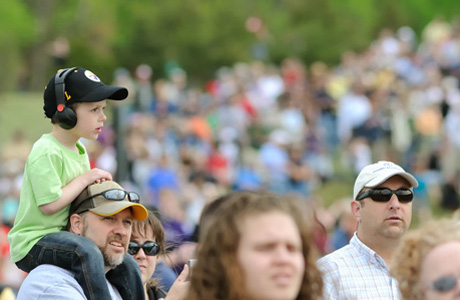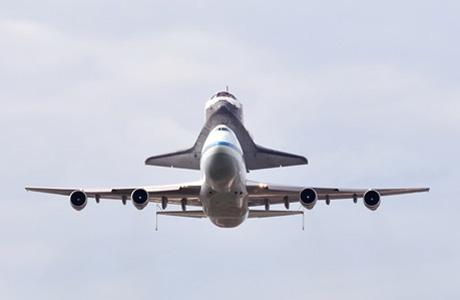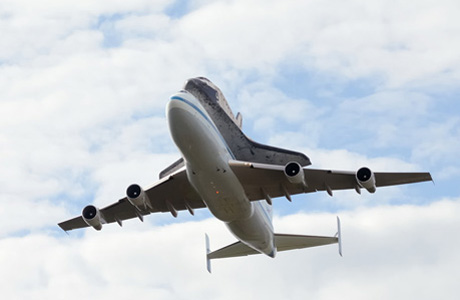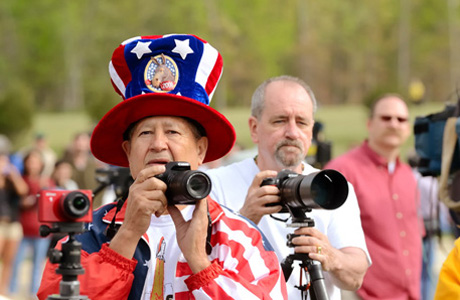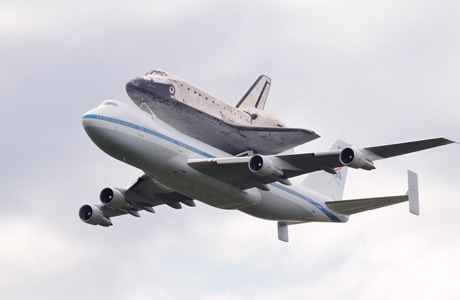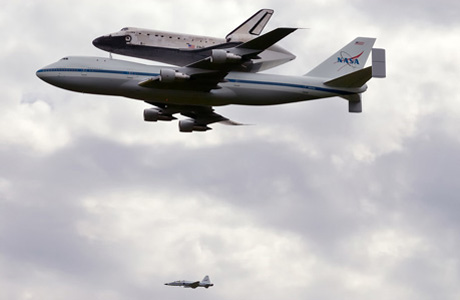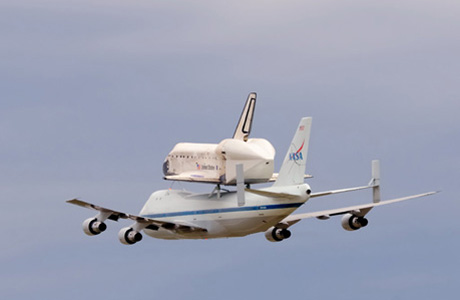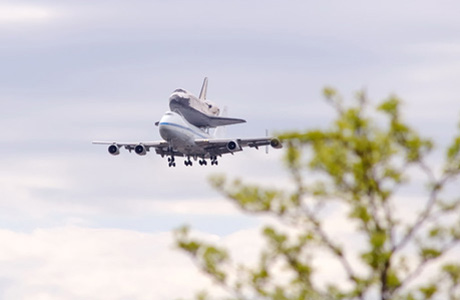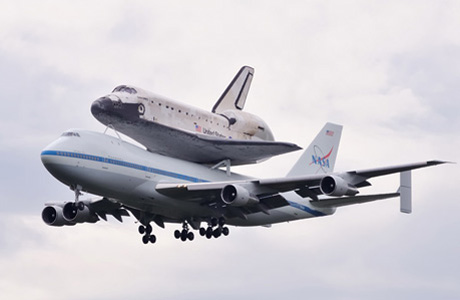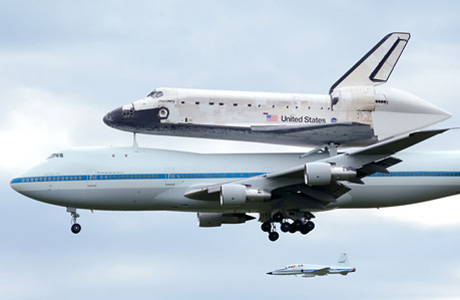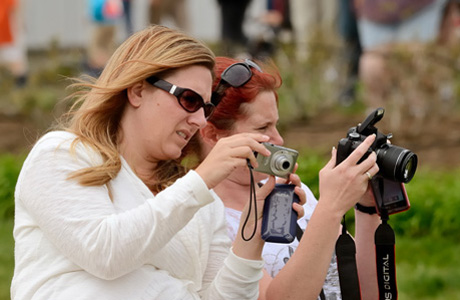With the words of Dulles Tower, a chapter of space travel drew to a close: “Pluto Nine-Five Heavy, cleared to land.”
The space shuttle Discovery appeared over the treeline atop its carrier aircraft, a modified Boeing 747, to an eruption of applause from thousands of visitors lining the parking lot of the National Air and Space Museum Steven F. Udvar-Hazy Center April 17. The accomplished orbiter, following a career that spanned 27 years, descended on final approach to its retirement home at the Virginia museum after departing the Kennedy Space Center in Florida and overflying landmarks around the Washington, D.C., area on its last flight. Crowds at the museum came early to watch a dramatic low pass before the aircraft circled the district and returned for another flyover and final touchdown.
“We’re space shuttle fanatics,” said Beth Feller of Fairfax, Va., a third- and fourth-grade science teacher who took the day off work to come with her husband and son to watch Discovery on its last flight. Feller said she planned to have a party for her students after school April 18 to watch Discovery take its place in the museum, where it will replace Enterprise. Enterprise is scheduled to be flown to New York City April 23 and transported by barge to the Intrepid Sea, Air & Space Museum in June.
In contrast to Enterprise, a test vehicle that was never equipped for space flight, Discovery is NASA’s longest-serving orbiter. The shuttle flew 39 times from 1984 through 2011, logging missions to deploy and service the Hubble Space Telescope, make the shuttle program’s first rendezvous with and last docking visit to Russia’s Mir space station, and make the first docking with the International Space Station. For many of the visitors who took off work and pulled their children from school to see the final flight, it was a symbol of the shuttle program’s three-decade-long presence in American lives: the anticipation of a long-awaited launch, the tragedies, and the triumphs.
Feller’s husband, Richard, grew up in Florida and used to watch the shuttle launches before the program ended in July 2011—including, he said, the Challenger explosion. Standing near the family’s camp chairs and a small folding table, he reflected on the end of the space shuttle program.
“It’s obviously sad,” he said. “It’s something I grew up with.” He had hoped his son would get to see a launch, he said, but he would be happy to see Discovery take its place in the Smithsonian. “It’ll be nice to see one that’s actually gone up and done what it’s supposed to do.”
The shuttle carrier aircraft made its first low approach shortly before 10 a.m. As the bright lights came into view, shouts of, “There it is!” triggered clapping and cheering. With a T-38 escort off its right wing, the mammoth aircraft flew directly overhead with a roar.
“It was really, really big and loud, and it was really cool,” said young Anna Lunt, who came with her parents and two other families from their Leesburg, Va., neighborhood. “ It was fun seeing the piggyback.”
Ellie Williams, of the same neighborhood, said she and the other parents of the group wanted to share the shuttle experience with their children because the kids are now around the same age as they were when the shuttle program started. For her husband, Jeff, an aerospace engineer working on a cargo supply vehicle for the International Space Station, the end of one chapter in space flight is the start of another.
“It’s the end of the space shuttle era,” said Jeff, an engineer for commercial space venture Orbital Sciences, “but it’s the start of a new commercial era.”
